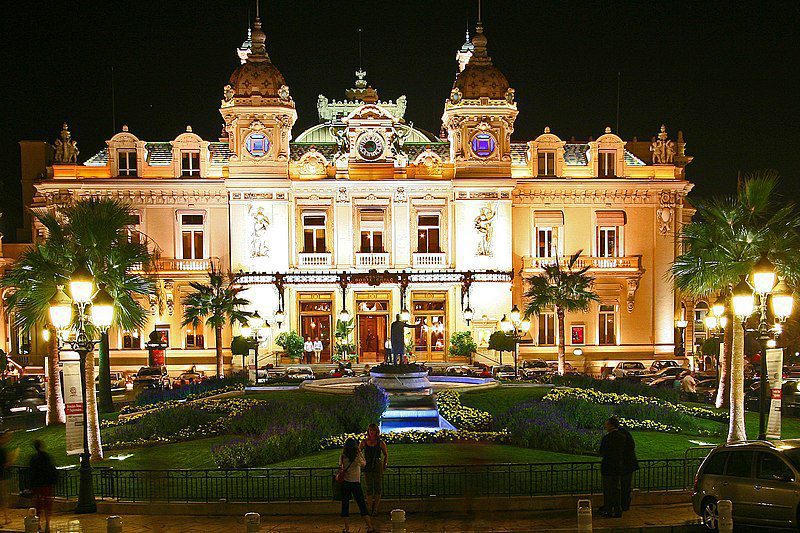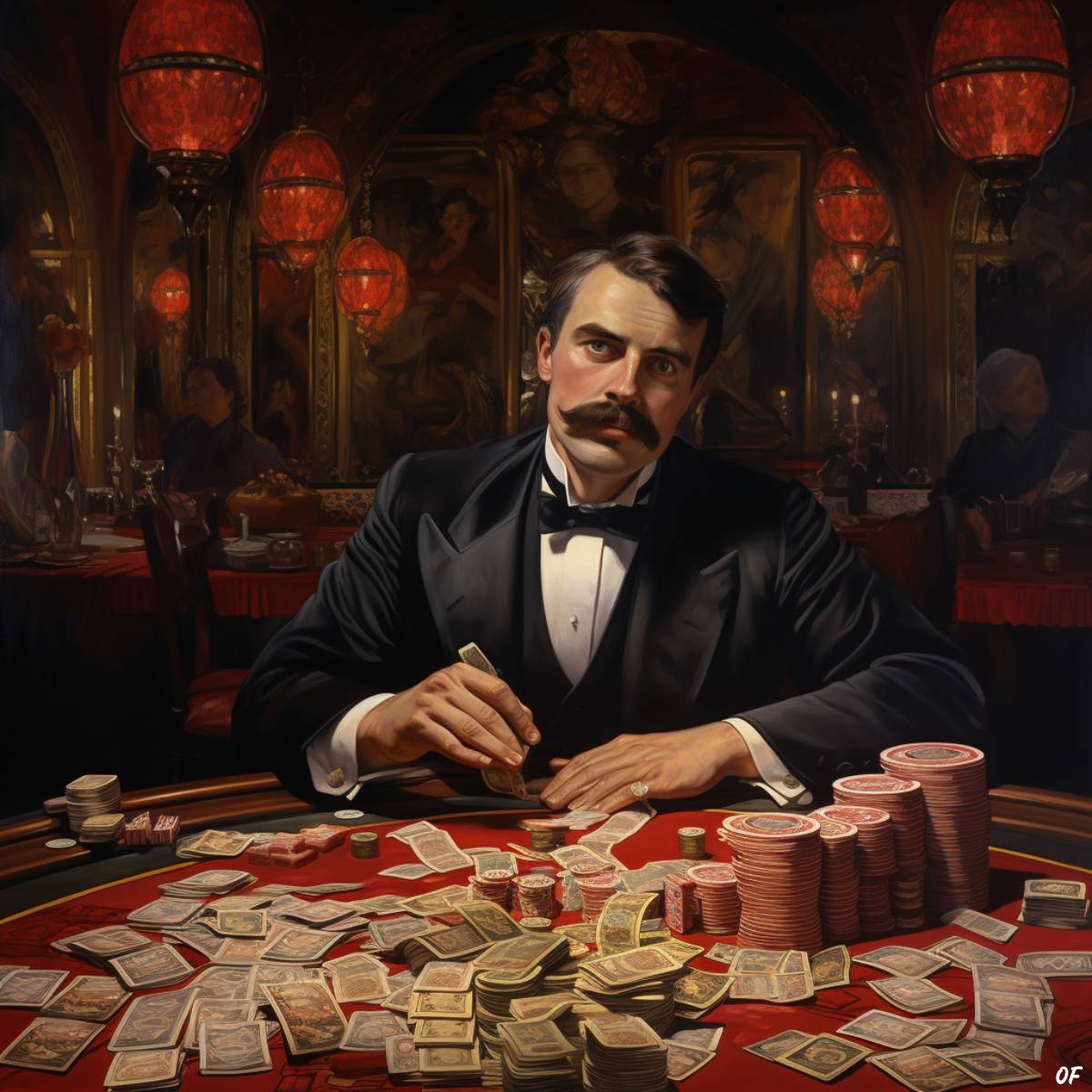Riding high on a wave of notoriety, steeped in intrigue and shrouded in audacious bravery, the life of Charles Deville Wells is a riveting tale of gambling, deceit, and flamboyance that cuts across the calm and often monotonous terrain of the late 19th century. He etched his name in the annals of history when he strolled into the world-renowned Monte Carlo Casino in 1891 and left with the unprecedented feat of “breaking the bank.”
Wells, a suave and enigmatic British gambler, was the embodiment of the audacious spirit of the age. As the story goes, he walked into the fabled gambling halls of Monte Carlo with a daring goal—to beat the odds at the roulette table, a game where the house always wins. His feat was no mere win; it was a resounding coup that echoed through the ornate halls of the casino and sent ripples through the global gambling community.
This astonishing event, now legendary, gave birth to the popular phrase “breaking the bank” and has since been immortalized in songs, books, and films. However, beneath the sheen of this historic victory lies a tale of fraudulent activities, audacious hoaxes, and relentless pursuit of wealth. This intricate tapestry weaves together the enigmatic personality of Charles Wells and his lasting impact on history and popular culture.
Early life and ventures
Charles Deville Wells was born in the pastoral setting of Hertfordshire, England. His initial career trajectory was far from the spectacular exploits he later became known for. Trained as an engineer, Wells moved to Marseille, a bustling port city on France’s southern coast, where he sought to carve out a respectable career path. His father taught English there, providing a multicultural backdrop to Wells’ upbringing.
However, the pursuits of engineering and invention proved to be an uphill battle for Wells. Despite his numerous attempts, his innovations failed to gain traction, marking a period of persistent disappointment in his life. This relentless adversity perhaps paved the way for Wells’ entry into the shadowy world of con-artistry, and soon, the failed inventor was a thriving fraudster.
He relocated to London, the heart of the British Empire, where he would con investors with captivating tales of fictional inventions, promising lofty returns that would never materialize. His ability to create compelling narratives, much like his later exploits in Monte Carlo, demonstrated a keen understanding of human psychology and an audacious disregard for moral boundaries.
As his illicit activities mounted, so did the strain on his personal life. His wife, unable to bear the burden of his fraudulent lifestyle, retreated to France with their daughter. But Wells was far from lonely. He found solace and companionship in Jeannette Pairis, a glamorous woman who would significantly influence his life. Almost 30 years his junior, Pairis and her desire for luxury would set the stage for Wells’ defining venture—an audacious plan to break the bank at Monte Carlo.
The Monte Carlo gamble
As the British summer of 1891 blossomed, Charles Deville Wells embarked on a journey to Monte Carlo with the dual aim of placating Jeannette Pairis’s desires for a lavish lifestyle and making a name for himself. Nestled in the azure backdrop of the French Riviera, Monte Carlo was a glamorous playground for the wealthy, a place where fortunes were made and lost on the roll of a dice or the spin of a roulette wheel.

Wells, however, was no ordinary gambler. He sauntered into the casino one day at noon with a substantial stake of £4,000, not a small sum in those times, and an audacious determination that would mark an unforgettable chapter in the annals of gambling history. Over the course of 11 hours, Wells held court at a roulette table, ensnared in a battle of chance and wit against the house.
As the roulette wheel whirred and clattered, it appeared to favor Wells. Again and again, the ball found its home on Wells’ chosen numbers, causing a growing mountain of banknotes to accumulate before him. This continued until Wells achieved the near-impossible—he “broke the bank.” He had managed to “faire sauter la banque,” winning more money than the table had available. By the time he walked away from the table, Wells had amassed around £4 million in today’s money.
Theories abound on how Wells pulled off this remarkable feat. Was it purely the caprices of chance? Wells himself attributed his winning streak to sheer luck, dismissing any insinuations of strategy or foul play. However, skeptical minds have often speculated whether the game was rigged in his favor. The possible involvement of the casino director Camille Blanc raised questions about the integrity of Monte Carlo’s casino. The suspected collusion and the use of a potentially biased roulette wheel could have been a black mark against the casino’s reputation. However, paradoxically, it may also have boosted its profits by attracting more hopeful gamblers, lured by the siren song of winning big, just like the legendary Charles Wells.
No evidence conclusively supports these allegations, and the truth remains as elusive as the man himself. Whether through fortune’s favor, ingenious fraud, or a skewed wheel, Wells’ Monte Carlo gamble stands as one of the most audacious and enigmatic episodes in gambling history.
Impact and influence
Wells’ extraordinary achievement was more than a personal victory. It sent shockwaves through the public consciousness, creating a ripple effect that would be felt in various spheres of popular culture. Chief among these was the creation of Fred Gilbert’s 1891 music hall hit, “The Man Who Broke the Bank at Monte Carlo.” The song, a jovial recounting of Wells’ feat, transformed the elusive con man into a folk hero, a testament to the public’s fascination with figures who dared to challenge the establishment.
The rights to the song were bought for £10 by Charles Coborn, a comedian and singer from Stepney. Coborn saw the potential of the song’s narrative and, in a stroke of performance genius, created an act around it. Dressed as a well-heeled gentleman, Coborn would deliver the song while staggering around the stage in feigned drunkenness, the audience roaring with laughter at the spectacle. The song became a massive hit, performed an estimated 250,000 times by Coborn in his career, and recorded in 14 languages, further perpetuating the legend of Charles Wells.
Beyond music, Wells’ daring gamble found its way into films and songs over the years. In 1935, a film inspired by his story was released, titled “The Man Who Broke the Bank at Monte Carlo,” albeit with a plot bearing scant resemblance to the actual events. Decades later, a snippet of Gilbert’s song was sung by Peter O’Toole in the classic film “Lawrence of Arabia,” and even in 2017, the tune was hummed by the android David in the film “Alien: Covenant.”.
Downfall and later life
But every story has its decline, and for Wells, it began with a series of arrests. As news of his Monte Carlo feat circulated, it brought him the kind of attention that a con man would prefer to avoid. His fraudulent ventures once shrouded in obscurity, were now under scrutiny. Soon enough, Wells found himself in the grip of the law, arrested for his criminal pursuits. He was sent to the grim Wormwood Scrubs prison, notorious for its harsh conditions. Yet even behind bars, Wells could not escape the echo of his Monte Carlo victory; crowds would gather outside the prison, serenading him with the strains of Gilbert’s hit song.
Wells, a skilled organist, would play the same tune inside the prison walls, transforming the cold stone chapel into a makeshift concert hall. The music was a reminder of his glory days and a stark contrast to his current predicament. His fortune, once formidable, had dwindled away, eaten up by legal fees and the costs of maintaining the high life. Yet, despite his financial decline, he held onto his glamorous companion, Jeannette Pairis, whose love for luxury had been a significant driver of his gambling exploits.
Released in 1899, Wells lived out his final years with Pairis in London, a shadow of his former flamboyant self. The glamour and the fortune were long gone, replaced by a struggle for survival. When he died in 1922, there were no grandiose funeral rites or elaborate tombstones. He owed two weeks’ rent and was buried in a pauper’s grave, a grim end for a man who once broke the bank at Monte Carlo.
Charles Wells, the man who broke the bank at Monte Carlo, did more than merely amass a fortune; he captured the imagination of a generation. Despite being shrouded in controversy and speculation, his story became an indelible part of popular culture, a symbol of audacity, luck, and the tantalizing allure of the gamble.


